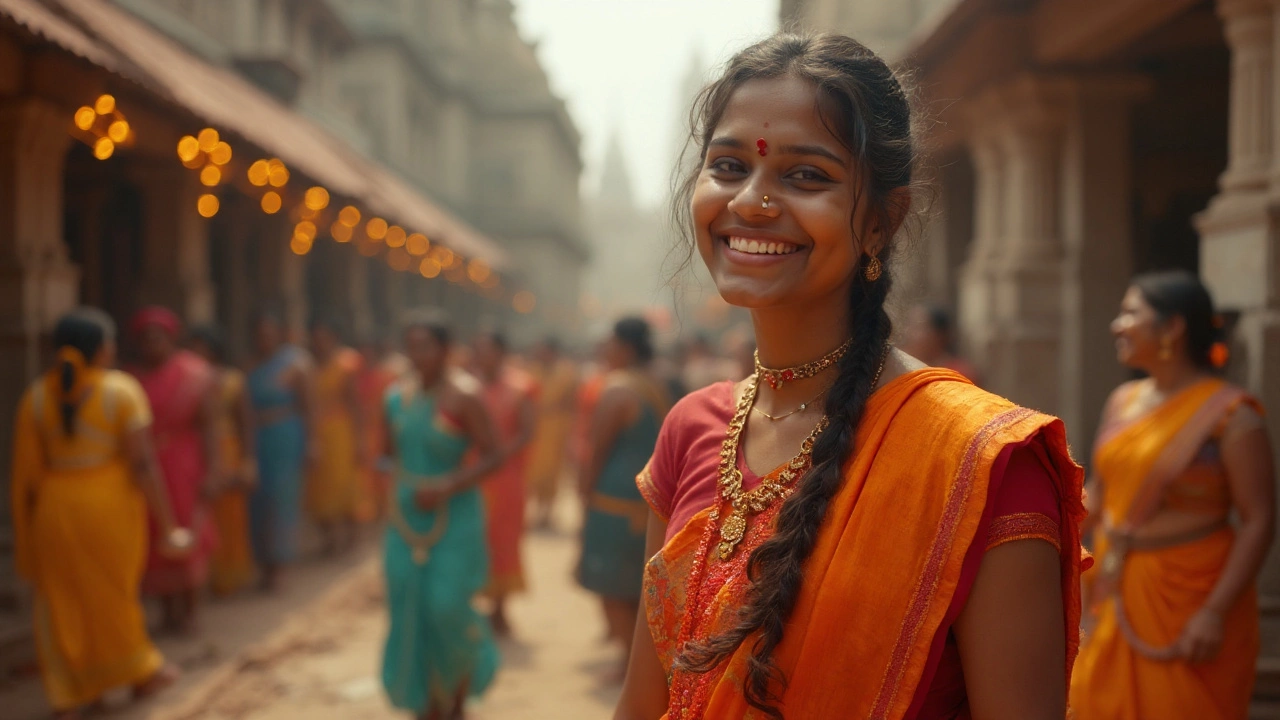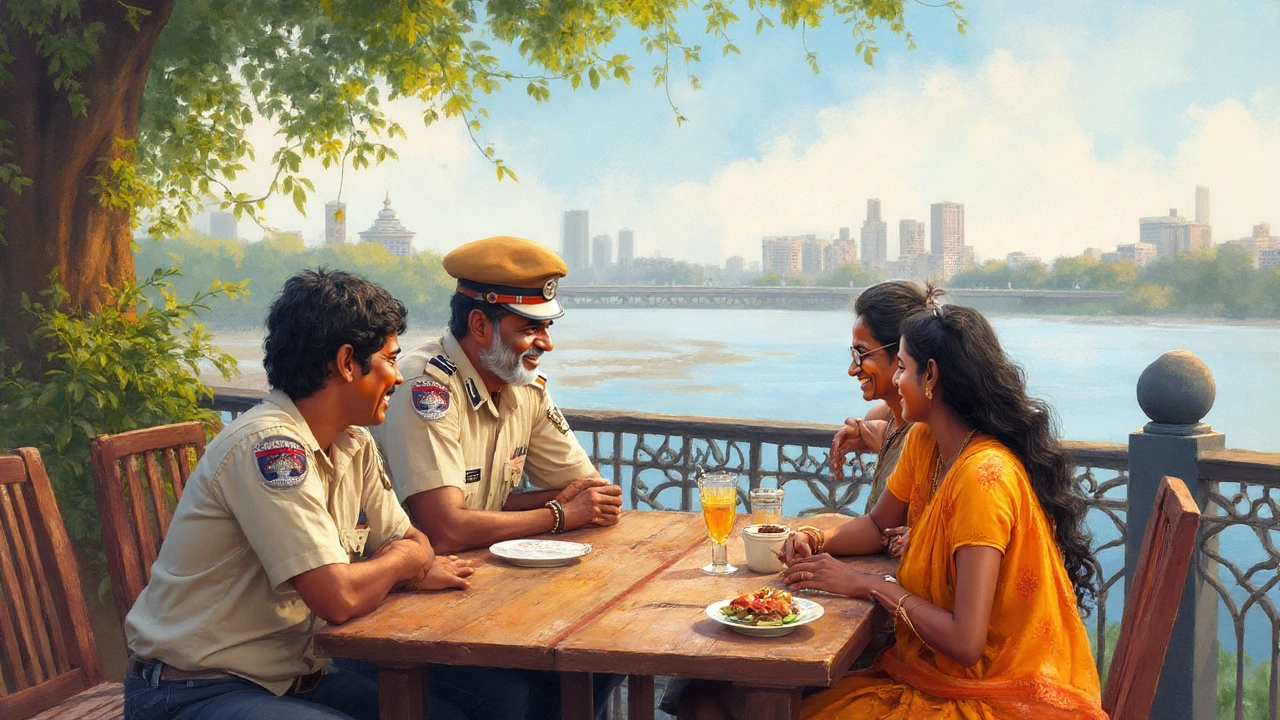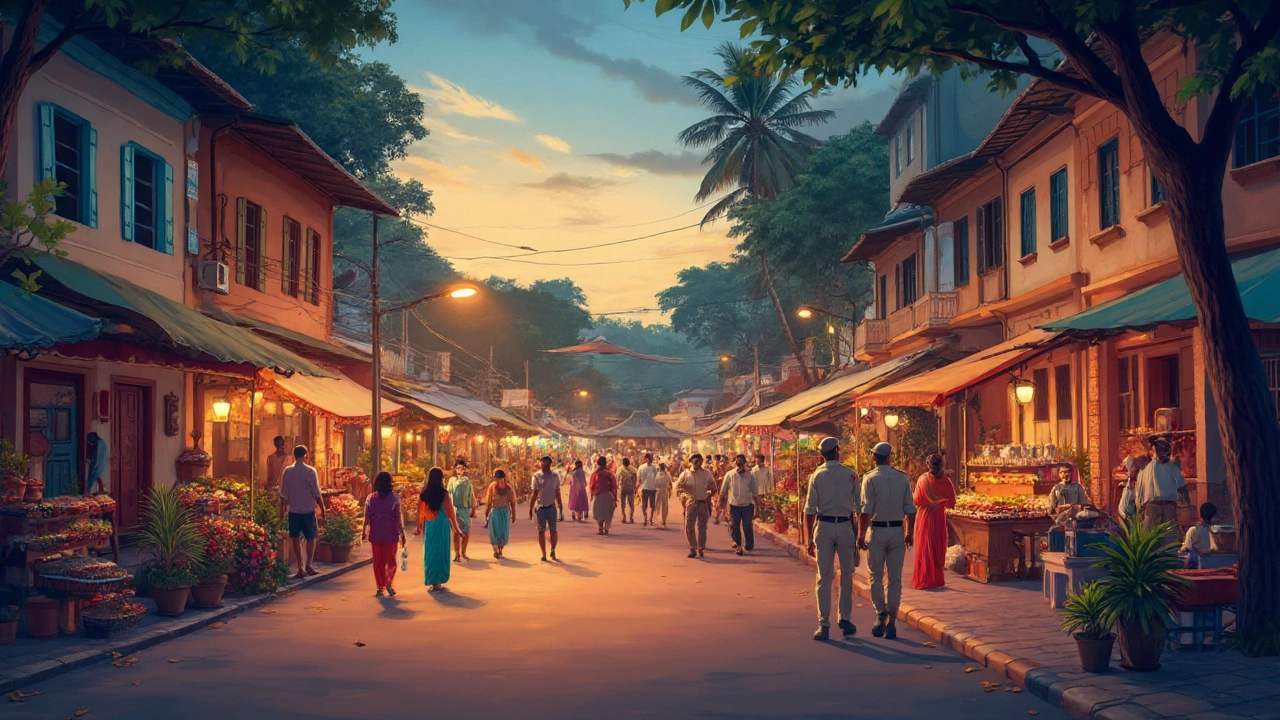Statistically, you're far safer walking home at midnight in Kerala than hailing a cab alone at noon in some other corners of the country. Ask anyone who’s lived or backpacked in South India: the topic of safety can spark heated debates, loaded with stories from lost wallets to heart-warming encounters with helpful strangers. Somewhere in these tales, one state consistently nabs the title of ‘safest’ – but let's break it down, cut through the internet myths, and get real about which state actually wears this crown now, in 2025.
Measuring Safety: What Really Matters?
Before jumping to name the safest state in South India, you have to ask: what does ‘safe’ even mean? For some, it’s about low crime rates, peaceful streets, and a feeling that you can trust your environment. For others, it might be how emergency services respond, the cleanliness of public places, or how women and solo travelers feel when exploring after dark.
Crime stats are a good place to start – and the National Crime Records Bureau (NCRB) releases figures each year that break down violent crimes, thefts, fraud, and even cybercrimes across every Indian state. But safety isn’t just about what’s reported; it’s also about vibe. Talk to expats, digital nomads, or elderly locals in a tea shop, and you’ll hear about countless small acts of kindness, the willingness of neighbors to help, or how quick police are to respond if you call. These aren’t always found in pie charts but massively shift how safe you’ll feel on the ground.
Corruption levels come into play, too—are public officials approachable or does it all come down to shady deals? Accessibility to healthcare, disaster readiness (hello, monsoon season), and even road safety (where reckless driving is sadly common in some states) matter more than many guidebooks admit.
So, measuring safety isn’t just a numbers game. It’s pretty holistic. For this article, I’m rolling in four major factors: official crime stats, local attitudes toward women’s safety, real-life traveler experience, and how well infrastructure protects citizens and visitors.
South India’s Major States: Safety Showdown
Let’s zoom in on the biggies: Kerala, Tamil Nadu, Karnataka, Andhra Pradesh, and Telangana. Each has its unique flavor, from Kerala’s tranquil backwaters to Hyderabad’s startup buzz. Let’s not kid ourselves—every place has gritty spots, but the patterns are telling.
Kerala comes up again and again in discussions about safety. The 2024 NCRB stats place Kerala among the states with the lowest violent crime rates in the country. What’s more surprising? The state’s conviction rate hovers around 74% for serious crimes—a number other states envy. Women and solo travelers regularly highlight how easy it is to move around at night or ask strangers for help. Most cities and towns have robust street lighting, a visible police presence, and well-organized auto and taxi services.
In Tamil Nadu, big cities like Chennai tend to be busy into the night. Crimes against tourists are few and far between. But, like any urban sprawl, petty theft can pop up, mainly in overcrowded markets. Locals are famously helpful, but late at night, deserted areas around Egmore or T Nagar might get sketchy. On the flip side, smaller cities like Coimbatore and Madurai keep a strong reputation for safety—the sort where your lost wallet actually finds its way back to you.
Karnataka has grown fast, with Bengaluru drawing expats and techies from far and wide. It’s almost a cliché to talk about the city’s safety for tech workers; most feel secure, and cases of mugging or assault are rare. But if you drift into remote areas after dark or hop onto poorly lit public buses, your risk factor bumps up, especially for women. Coastal towns like Mangalore and Udupi, though? They have a reputation for being so safe you could fall asleep on a beach bench and wake up with your phone still in your pocket.
Andhra Pradesh and Telangana, especially since their separation, get less tourist attention, but both have taken serious strides in public safety. Hyderabad, for example, has become a model for surveillance—over 650,000 CCTVs now watch over public spaces. Crime rates dropped by almost 20% from 2022 to 2024, according to the city police commissioner’s July 2025 briefing. Even so, pickpocketing in crowded areas is a known problem. Smaller cities like Vijayawada and Visakhapatnam are often lauded for their safety, both for locals and travelers.
If you’re judging ‘safe’ by where you’re statistically least likely to be a victim of crime—whether you’re a tourist, a woman, or a retiree—Kerala is way ahead. But for those concerned more about natural disasters (Kerala’s monsoons really flood the place), Tamil Nadu’s arid regions might look more appealing.

Why Kerala Wins the Title (and Where It Still Falls Short)
Digging into why safest state in south india types so often land on Kerala, a few details stand out. The people are upfront, sometimes to the point of bluntness, but they hardly ever ignore someone in need. Even travel forums like TripAdvisor are loaded with stories of travelers helped out by locals after missing the last bus, or elderly women helping foreign tourists translate bus routes. In most towns, the first auto driver you meet is far more likely to help you find your hotel than quote a ridiculous fare or lead you into a tourist scam.
One underrated factor? Literacy. Kerala is the most literate state in India, with almost universal education. This translates into not only more locals speaking English (handy for foreign travelers), but also a culture that values hospitality and mutual respect. There’s almost a mini Switzerland vibe in some hill towns—social trust is just built into daily life.
Women here tend to feel freer walking alone, even at odd hours, especially in family-oriented spaces like Thrissur or Kottayam. Travelers talk about catching late trains or ferries without a glimpse of harassment—something that’s tough to find in bigger metros elsewhere.
And the police? You’ll see cops patrolling major intersections regularly. Community policing is taken seriously; neighborhoods often have committees that spot and sort local troubles before they become bigger headaches. Mobile safety apps connected with local precincts let you press a button and have help dispatched within minutes. If you need emergency medical help, you’ll often get an ambulance in under 10 minutes. That’s faster than in some US cities.
But Kerala isn’t perfect. Monsoons, which last from June through August, knock out roads, flood villages, and disrupt travel, as anyone stranded near Kochi will grumble. Certain places, especially during hartal (local strike) days, can lock down pretty hard, making movement tricky for outsiders. Some remote areas have sluggish emergency response, too, with mobile signals patchier than you’d expect for a state so advanced in so many ways.
Corruption is lower than the mainland average, but it isn’t non-existent. There are stray stories about traffic cops asking for a little ‘chai-paani’ on lonely highways. But these are brushes with Indian bureaucracy, not threats to life and limb.
Safety Tips for Travelers and Locals
Even the safest places reward a bit of caution. No point tempting fate by walking home hammered at 3 a.m., right? Here’s what works, especially in Kerala and similar safe regions across South India:
- Stick to busy areas at night, especially near touristy spots and transportation hubs—these tend to have police presence and security cameras.
- Download and use local safety apps, many of which are in partnership with state police and include panic button features.
- Avoid carrying large sums of cash or flashing expensive jewelry—leave that bling at the hotel safe; UPI and digital wallets are accepted almost everywhere.
- If traveling solo and you get lost, hop into a nearby tea shop or ask a family waiting at a bus stop for help instead of wandering alone.
- Be aware during strike (hartal) days; transportation can stop suddenly and shops might close. Always have some snacks, a water bottle, and a backup mobile charger on these days.
- Wear modest clothing, especially if you’re heading to smaller towns or temple areas—locals can be traditional about dress, and blending in helps avoid unwanted attention.
- Save emergency numbers and the contact details of your hotel or homestay in your phone and on a piece of paper. Sometimes batteries die at the worst moments.
- Use registered taxis or official auto stands—Uber and Ola are widespread in southern cities and usually safer at night than hailing a random cab.
- If driving, watch out for potholes during monsoon months. The rain is relentless and can hide sudden road damage.
- Don’t drink local tap water unless you’re sure it’s filtered; bottled water is cheap and found everywhere.
This isn’t about paranoia, just street smarts. The overwhelming vibe in the safest corners of South India is friendly curiosity—not predatory intent.

Beyond Statistics: Real Stories from the Ground
Numbers can tell you only so much. You want stories. Talk to Esha, who biked the entire length of Kerala alone in 2024, camping at village temples and hitching rides in rainstorms—she came back with tales of roadside samosas and impromptu hosts, not fears. Or Thomas, who routinely leaves his bike unlocked outside the bakery in Thrissur and says he’s never lost as much as a water bottle, let alone a vehicle.
Then there’s Priya, who grew up in Chennai and moved to Kochi after college. She swears even solo midnight walks by the backwaters in Ernakulam feel fine, as long as you steer clear of a handful of bar-heavy back streets. Or Jamie, the British expat who’s been living in Mangalore for five years and says the city’s obsession with safety borders on boring—he even forgot his wallet at a café, and it was tracked down and returned intact.
In travel groups, stories from Andhra Pradesh, Telangana, or Karnataka aren’t dramatically different, but a common thread is that Kerala just feels a touch safer. Maybe it’s the higher density of families on the streets, the lighting, or an ingrained culture of respect—especially for outsiders. Women travelers, both Indian and foreign, are especially vocal about this difference.
Still, no place is a utopia. Bad things sometimes happen, and the golden rule is to trust your gut. If somewhere feels off, move on. It’s the beauty of South India that, in the span of a single bus ride, you can go from a bustling city to sleepy towns where people still leave their front doors open during the day.
If you’re angling for a travel experience where safety isn’t a constant worry, Kerala is your best bet. The state went through a boom in ‘safe tourism’ right after the pandemic, and the ripples are still felt: from solo-travel retreats to all-women taxi services, the options are growing.
South India, and Kerala standing tall among its peers, isn’t just safe by the stats. It feels safe—something every traveler, family, or digital nomad craves. A bit of research, a dash of local insight, and you’ll see why the state lives up to the hype.
